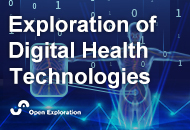
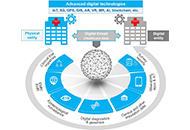
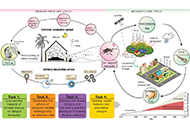
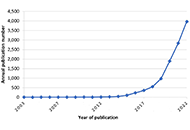
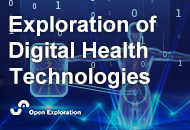
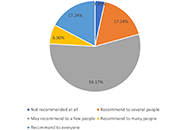
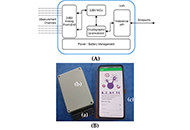
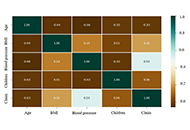
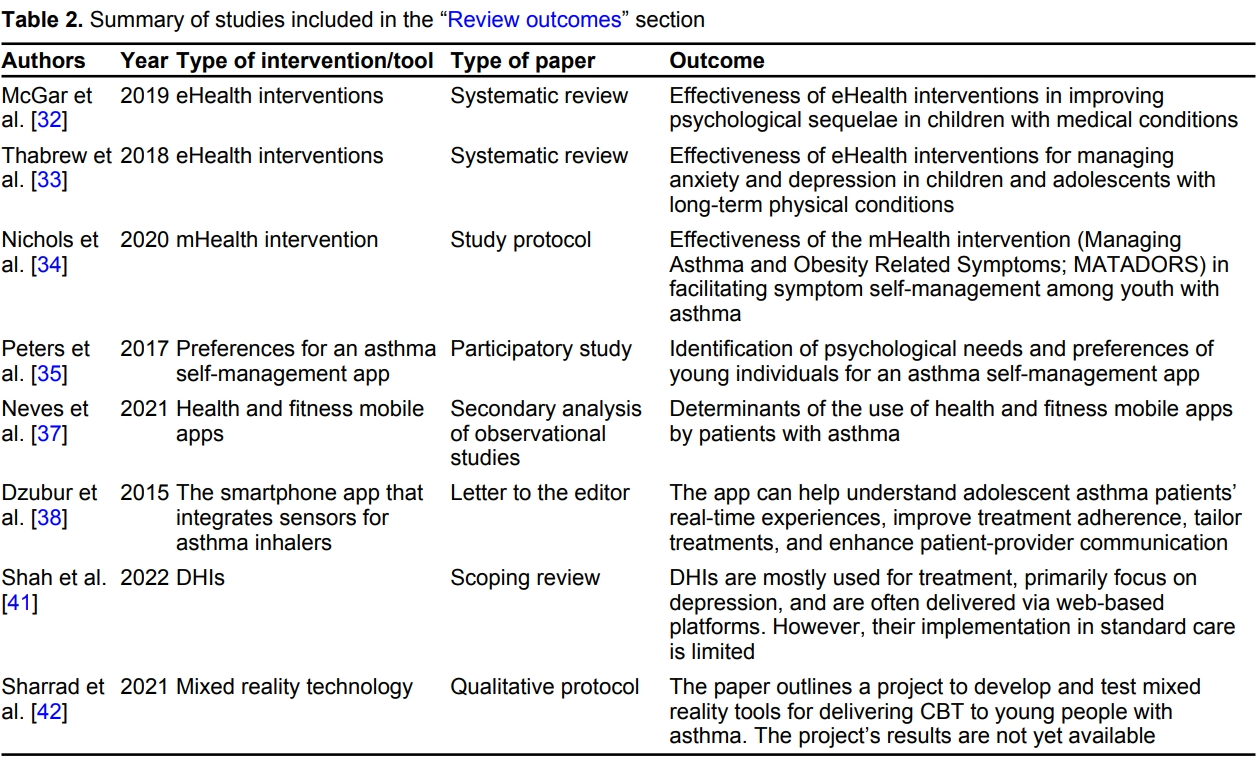
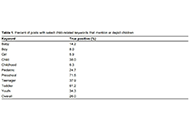
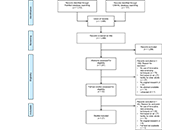
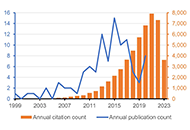
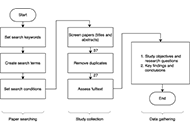
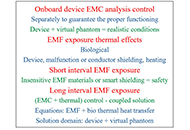

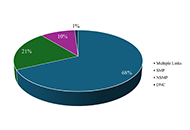
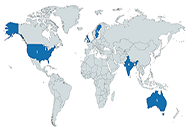
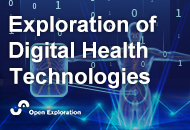
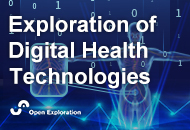
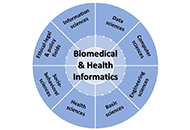

Twitter has been an invaluable social media platform for scientists to share research and host discourse among academics and the public. The change of ownership at Twitter has changed how scientists interact with the platform and has led some to worry about its future. This article discusses the current changes at Twitter and what implications these may have for future health research and communication.
Twitter has been an invaluable social media platform for scientists to share research and host discourse among academics and the public. The change of ownership at Twitter has changed how scientists interact with the platform and has led some to worry about its future. This article discusses the current changes at Twitter and what implications these may have for future health research and communication.
DOI: https://doi.org/10.37349/edht.2023.00002
This article belongs to the special issue Social Media Applications in Biomedical Research

Digital technologies have garnered more attention in this epoch of public health emergencies like coronavirus disease 2019 (COVID-19) and monkeypox (mpox). Digital twin (DT) is the virtual cybernetic equivalent of a physical object (e.g., a device, a human, a community) used to better understand the complexity of the latter and predict, prevent, monitor, and optimize real-world outcomes. The possible use cases of DT systems in public health ranging from mass vaccination planning to understanding disease transmission patterns have been discussed. Despite potential applications in healthcare, several economic, social, and ethical challenges might hinder the universal implementation of DT. Nevertheless, devising appropriate policies, reinforcing good governance, and launching multinational collaborative efforts ascertain early espousal of DT technology.
Digital technologies have garnered more attention in this epoch of public health emergencies like coronavirus disease 2019 (COVID-19) and monkeypox (mpox). Digital twin (DT) is the virtual cybernetic equivalent of a physical object (e.g., a device, a human, a community) used to better understand the complexity of the latter and predict, prevent, monitor, and optimize real-world outcomes. The possible use cases of DT systems in public health ranging from mass vaccination planning to understanding disease transmission patterns have been discussed. Despite potential applications in healthcare, several economic, social, and ethical challenges might hinder the universal implementation of DT. Nevertheless, devising appropriate policies, reinforcing good governance, and launching multinational collaborative efforts ascertain early espousal of DT technology.
DOI: https://doi.org/10.37349/edht.2023.00003
This article belongs to the special issue Social Media Applications in Biomedical Research

Transmitted primarily by Aedes aegypti (Ae. aegypti) and Aedes albopictus (Ae. albopictus), arboviral diseases pose a major global public health threat. Dengue, chikungunya, and zika are increasingly prevalent in Southeast Asia. Among other arboviruses, dengue and zika are becoming more common in Central and South America. Given human encroachment into previously uninhabited, often deforested areas, to provide new housing in regions of population expansion, conceptualizing built urban environments in a novel way is urgently needed to safeguard against the growing climate change-driven threat of vector-borne diseases. By understanding the spread from a One Health perspective, enhanced control and prevention can be achieved. This is particularly important considering that climate change is likely to significantly impact the persistence of ponded water where mosquitoes breed due to increasing temperature and shifting rainfall patterns with regard to magnitude, duration, frequency, and season. Models can incorporate aquatic mosquito stages and adult spatial dynamics when habitats are heterogeneously available, thereby including dispersal and susceptible-exposed-infected-recovered (SEIR) epidemiology. Coupled with human population distribution (density, locations), atmospheric conditions (air temperature, precipitation), and hydrological conditions (soil moisture distribution, ponding persistence in topographic depressions), modeling has improved predictive ability for infection rates. However, it has not informed interventional approaches from an urban environment perspective which considers the role of ponds/lakes that support green spaces, the density of population that enables rapid spread of disease, and varying micro-habitats for various mosquito stages under climate change. Here, for an example of dengue in Vietnam, a preventive and predictive approach to design resilient urban environments is proposed, which uses data from rapidly expanding metropolitan communities to learn continually. This protocol deploys computational approaches including simulation and machine learning/artificial intelligence, underpinned by surveillance and medical data for validation and adaptive learning. Its application may best inform urban planning in low-middle income countries in tropical zones where arboviral pathogens are prevalent.
Transmitted primarily by Aedes aegypti (Ae. aegypti) and Aedes albopictus (Ae. albopictus), arboviral diseases pose a major global public health threat. Dengue, chikungunya, and zika are increasingly prevalent in Southeast Asia. Among other arboviruses, dengue and zika are becoming more common in Central and South America. Given human encroachment into previously uninhabited, often deforested areas, to provide new housing in regions of population expansion, conceptualizing built urban environments in a novel way is urgently needed to safeguard against the growing climate change-driven threat of vector-borne diseases. By understanding the spread from a One Health perspective, enhanced control and prevention can be achieved. This is particularly important considering that climate change is likely to significantly impact the persistence of ponded water where mosquitoes breed due to increasing temperature and shifting rainfall patterns with regard to magnitude, duration, frequency, and season. Models can incorporate aquatic mosquito stages and adult spatial dynamics when habitats are heterogeneously available, thereby including dispersal and susceptible-exposed-infected-recovered (SEIR) epidemiology. Coupled with human population distribution (density, locations), atmospheric conditions (air temperature, precipitation), and hydrological conditions (soil moisture distribution, ponding persistence in topographic depressions), modeling has improved predictive ability for infection rates. However, it has not informed interventional approaches from an urban environment perspective which considers the role of ponds/lakes that support green spaces, the density of population that enables rapid spread of disease, and varying micro-habitats for various mosquito stages under climate change. Here, for an example of dengue in Vietnam, a preventive and predictive approach to design resilient urban environments is proposed, which uses data from rapidly expanding metropolitan communities to learn continually. This protocol deploys computational approaches including simulation and machine learning/artificial intelligence, underpinned by surveillance and medical data for validation and adaptive learning. Its application may best inform urban planning in low-middle income countries in tropical zones where arboviral pathogens are prevalent.
DOI: https://doi.org/10.37349/edht.2023.00004

DOI: https://doi.org/10.37349/edht.2023.00001

The use of generative artificial intelligence (AI) chatbots, such as ChatGPT and YouChat, has increased enormously since their release in late 2022. Concerns have been raised over the potential of chatbots to facilitate cheating in education settings, including essay writing and exams. In addition, multiple publishers have updated their editorial policies to prohibit chatbot authorship on publications. This article highlights another potentially concerning issue; the strong propensity of chatbots in response to queries requesting medical and scientific information and its underlying references, to generate plausible looking but inaccurate responses, with the chatbots also generating nonexistent citations. As an example, a number of queries were generated and, using two popular chatbots, demonstrated that both generated inaccurate outputs. The authors thus urge extreme caution, because unwitting application of inconsistent and potentially inaccurate medical information could have adverse outcomes.
The use of generative artificial intelligence (AI) chatbots, such as ChatGPT and YouChat, has increased enormously since their release in late 2022. Concerns have been raised over the potential of chatbots to facilitate cheating in education settings, including essay writing and exams. In addition, multiple publishers have updated their editorial policies to prohibit chatbot authorship on publications. This article highlights another potentially concerning issue; the strong propensity of chatbots in response to queries requesting medical and scientific information and its underlying references, to generate plausible looking but inaccurate responses, with the chatbots also generating nonexistent citations. As an example, a number of queries were generated and, using two popular chatbots, demonstrated that both generated inaccurate outputs. The authors thus urge extreme caution, because unwitting application of inconsistent and potentially inaccurate medical information could have adverse outcomes.
DOI: https://doi.org/10.37349/edht.2024.00006

Aim:
Mobile health applications (MHAs) have been rapidly designed and urgently need evaluation. Existing evaluation methods, such as platform, development, and subjective overall user observations, are mostly based on application (app) design. This study aimed to evaluate the functionality and feasibility of an MHA to train cognitive function in youth at clinical high risk (CHR) for psychosis with a tool that allows a comprehensive user experience evaluation of mobile apps from multiple dimensions.
Methods:
Eighty participants with CHR for psychosis were recruited and randomly assigned to the intervention and the group control. Participants in the intervention group used the Specific Memory Attention Resource and Training (SMART) app for three months. MHA’s functionality and feasibility were measured by the mobile app rating scale (MARS) and qualitative tools.
Results:
Participants in the SMART group report that the form and design of this app are simple to operate, and the content is trustworthy. They reported improvement in cognitive function and more motivation to seek help to improve their cognitive function. They also pointed out areas of improvement.
Conclusions:
SMART usability and functionality were measured by a multidimensional tool. It shows promise in improving CHR memory and attention and demonstrates appropriate usability and functionality.
Aim:
Mobile health applications (MHAs) have been rapidly designed and urgently need evaluation. Existing evaluation methods, such as platform, development, and subjective overall user observations, are mostly based on application (app) design. This study aimed to evaluate the functionality and feasibility of an MHA to train cognitive function in youth at clinical high risk (CHR) for psychosis with a tool that allows a comprehensive user experience evaluation of mobile apps from multiple dimensions.
Methods:
Eighty participants with CHR for psychosis were recruited and randomly assigned to the intervention and the group control. Participants in the intervention group used the Specific Memory Attention Resource and Training (SMART) app for three months. MHA’s functionality and feasibility were measured by the mobile app rating scale (MARS) and qualitative tools.
Results:
Participants in the SMART group report that the form and design of this app are simple to operate, and the content is trustworthy. They reported improvement in cognitive function and more motivation to seek help to improve their cognitive function. They also pointed out areas of improvement.
Conclusions:
SMART usability and functionality were measured by a multidimensional tool. It shows promise in improving CHR memory and attention and demonstrates appropriate usability and functionality.
DOI: https://doi.org/10.37349/edht.2024.00007

Aim:
After the severe acute respiratory syndrome coronavirus 2 (SARS-CoV-2) pandemic and the realization of mass vaccination against the virus, the availability of a reliable, rapid, and easy-to-use system for registering the individual anti-S1 antibody titer could facilitate the personalized assessment of the need for booster vaccine doses and the reduction of social distancing and other measures.
Methods:
The biosensor system is based on immobilized engineered SK-N-SH neuroblastoma cells, bearing the S1 protein, and it can detect immunoglobulin G (IgG) antibodies against the SARS-CoV-2 S1 spike antigen. A disposable electrode strip bearing the engineered mammalian cells is connected to a customized read-out potentiometric device with real-time data transmission to a wireless fidelity (WiFi)-connected smartphone. Blood samples from past-infected individuals and individuals vaccinated against SARS-CoV-2 were used for validation.
Results:
In the present study, a smartphone application (app), capable of analyzing data regarding the levels of anti-S1 antibodies in blood is introduced. The app works in conjunction with a portable, ultra-rapid, and sensitive biosensor transmitting real-time measurements to the smartphone. Both historical and current individual data can be encoded by using the app, resulting in a widely accepted quick response (QR) code, which can then be constantly updated to match a person’s status.
Conclusions:
This novel system could be utilized for the eventual development of a coronavirus disease 2019 (COVID-19) electronic passport, which could be further employed to improve the population-wide, cross-country surveillance of vaccination efficiency, as well as facilitate the implementation of cross-border digital health services in a user-friendly and secure way.
Aim:
After the severe acute respiratory syndrome coronavirus 2 (SARS-CoV-2) pandemic and the realization of mass vaccination against the virus, the availability of a reliable, rapid, and easy-to-use system for registering the individual anti-S1 antibody titer could facilitate the personalized assessment of the need for booster vaccine doses and the reduction of social distancing and other measures.
Methods:
The biosensor system is based on immobilized engineered SK-N-SH neuroblastoma cells, bearing the S1 protein, and it can detect immunoglobulin G (IgG) antibodies against the SARS-CoV-2 S1 spike antigen. A disposable electrode strip bearing the engineered mammalian cells is connected to a customized read-out potentiometric device with real-time data transmission to a wireless fidelity (WiFi)-connected smartphone. Blood samples from past-infected individuals and individuals vaccinated against SARS-CoV-2 were used for validation.
Results:
In the present study, a smartphone application (app), capable of analyzing data regarding the levels of anti-S1 antibodies in blood is introduced. The app works in conjunction with a portable, ultra-rapid, and sensitive biosensor transmitting real-time measurements to the smartphone. Both historical and current individual data can be encoded by using the app, resulting in a widely accepted quick response (QR) code, which can then be constantly updated to match a person’s status.
Conclusions:
This novel system could be utilized for the eventual development of a coronavirus disease 2019 (COVID-19) electronic passport, which could be further employed to improve the population-wide, cross-country surveillance of vaccination efficiency, as well as facilitate the implementation of cross-border digital health services in a user-friendly and secure way.
DOI: https://doi.org/10.37349/edht.2024.00008
This article belongs to the special issue Biosensors for Bioactive Molecules

Aim:
This study investigates the potential of artificial intelligence (AI) in revolutionizing healthcare insurance claim processing in the USA. It aims to determine the most effective machine learning (ML) model for predicting health insurance claims, leading to cost savings for insurance companies.
Methods:
Six ML algorithms were used to predict health insurance claims, and their performance was evaluated using various metrics. The algorithms examined include support vector machine (SVM), decision tree (DT), random forest (RF), linear regression (LR), extreme gradient boosting (XGBoost), and k-nearest neighbors (KNN). The research involves a performance assessment that encompasses key metrics. Additionally, a feature importance analysis is conducted to illuminate the critical variables that exert influence on the prediction of insurance claims.
Results:
The findings demonstrate that the XGBoost and RF models outperformed the other algorithms, displaying the highest R-squared values of 79% and 77% and the lowest prediction errors. The feature importance analysis underscores the pivotal role of variables such as smoking habits, body mass index (BMI), and blood pressure levels in the domain of insurance claim prediction. These results emphasize the degree to which these variables should be included in the formulation of insurance policies and pricing strategies.
Conclusions:
This study supports the transformative potential of AI, with specific emphasis on the XGBoost model, in extending the precision and efficiency of healthcare insurance claim processing. The identification of key variables and the mitigation of prediction errors not only signal the potential for substantial cost savings but also affirm the potential to integrate AI into healthcare insurance processes. This research supports the value of the utilization of AI as an emerging tool for process optimization and data-informed decision-making within the healthcare insurance domain.
Aim:
This study investigates the potential of artificial intelligence (AI) in revolutionizing healthcare insurance claim processing in the USA. It aims to determine the most effective machine learning (ML) model for predicting health insurance claims, leading to cost savings for insurance companies.
Methods:
Six ML algorithms were used to predict health insurance claims, and their performance was evaluated using various metrics. The algorithms examined include support vector machine (SVM), decision tree (DT), random forest (RF), linear regression (LR), extreme gradient boosting (XGBoost), and k-nearest neighbors (KNN). The research involves a performance assessment that encompasses key metrics. Additionally, a feature importance analysis is conducted to illuminate the critical variables that exert influence on the prediction of insurance claims.
Results:
The findings demonstrate that the XGBoost and RF models outperformed the other algorithms, displaying the highest R-squared values of 79% and 77% and the lowest prediction errors. The feature importance analysis underscores the pivotal role of variables such as smoking habits, body mass index (BMI), and blood pressure levels in the domain of insurance claim prediction. These results emphasize the degree to which these variables should be included in the formulation of insurance policies and pricing strategies.
Conclusions:
This study supports the transformative potential of AI, with specific emphasis on the XGBoost model, in extending the precision and efficiency of healthcare insurance claim processing. The identification of key variables and the mitigation of prediction errors not only signal the potential for substantial cost savings but also affirm the potential to integrate AI into healthcare insurance processes. This research supports the value of the utilization of AI as an emerging tool for process optimization and data-informed decision-making within the healthcare insurance domain.
DOI: https://doi.org/10.37349/edht.2024.00009
This article belongs to the special issue Data-informed Decision Making in Healthcare

The paper aimed to provide a comprehensive overview of the use of digital health technologies in the assessment, treatment, and self-management of psychological and psychopathological factors associated with asthma. A collection of research articles and systematic reviews related to asthma, including topics such as outdoor air pollution, early life wheezing illnesses, atopic dermatitis, digital interventions for asthma self-management, psychiatric disorders and asthma, family influences on pediatric asthma, and the use of mobile health (mHealth) applications for asthma management, were analyzed. Eight selected studies were reviewed to assess the potential of digital health technologies in improving asthma psychological-related factors management and treatment outcomes. The reviewed studies suggest that electronic health (eHealth) interventions, mixed reality tools, mHealth technology-enhanced nurse-guided interventions, and smartphone applications integrating Bluetooth-enabled sensors for asthma inhalers can significantly improve symptom self-management, quality of life, and mental health outcomes, especially in children and adolescents with asthma (JMIR Pediatr Parent. 2019;2:e12427. doi: 10.2196/12427; Cochrane Database Syst Rev. 2018;8:CD012489. doi: 10.1002/14651858.CD012489.pub2; Int J Environ Res Public Health. 2020;17:7750. doi: 10.3390/ijerph17217750; J Med Internet Res. 2017;19:e113. doi: 10.2196/jmir.6994; J Med Internet Res. 2021;23:e25472. doi: 10.2196/25472; Ann Allergy Asthma Immunol. 2015;114:341–2.E2. doi: 10.1016/j.anai.2014.12.017; J Med Internet Res. 2022;24:e38030. doi: 10.2196/38030; Int J Qual Methods. 2021;20:16094069211008333. doi: 10.1177/16094069211008333). However, further research is needed to determine their effectiveness and feasibility in different populations and settings. Tailored interventions that address the specific needs and preferences of patients with asthma and associated psychological factors are crucial for ensuring sustained and equitable use of these technologies. The manuscript emphasizes the importance of addressing psychological factors in the management and treatment of asthma and call for continued research and development in this area.
The paper aimed to provide a comprehensive overview of the use of digital health technologies in the assessment, treatment, and self-management of psychological and psychopathological factors associated with asthma. A collection of research articles and systematic reviews related to asthma, including topics such as outdoor air pollution, early life wheezing illnesses, atopic dermatitis, digital interventions for asthma self-management, psychiatric disorders and asthma, family influences on pediatric asthma, and the use of mobile health (mHealth) applications for asthma management, were analyzed. Eight selected studies were reviewed to assess the potential of digital health technologies in improving asthma psychological-related factors management and treatment outcomes. The reviewed studies suggest that electronic health (eHealth) interventions, mixed reality tools, mHealth technology-enhanced nurse-guided interventions, and smartphone applications integrating Bluetooth-enabled sensors for asthma inhalers can significantly improve symptom self-management, quality of life, and mental health outcomes, especially in children and adolescents with asthma (JMIR Pediatr Parent. 2019;2:e12427. doi: 10.2196/12427; Cochrane Database Syst Rev. 2018;8:CD012489. doi: 10.1002/14651858.CD012489.pub2; Int J Environ Res Public Health. 2020;17:7750. doi: 10.3390/ijerph17217750; J Med Internet Res. 2017;19:e113. doi: 10.2196/jmir.6994; J Med Internet Res. 2021;23:e25472. doi: 10.2196/25472; Ann Allergy Asthma Immunol. 2015;114:341–2.E2. doi: 10.1016/j.anai.2014.12.017; J Med Internet Res. 2022;24:e38030. doi: 10.2196/38030; Int J Qual Methods. 2021;20:16094069211008333. doi: 10.1177/16094069211008333). However, further research is needed to determine their effectiveness and feasibility in different populations and settings. Tailored interventions that address the specific needs and preferences of patients with asthma and associated psychological factors are crucial for ensuring sustained and equitable use of these technologies. The manuscript emphasizes the importance of addressing psychological factors in the management and treatment of asthma and call for continued research and development in this area.
DOI: https://doi.org/10.37349/edht.2024.00010
This article belongs to the special issue Telepsychiatry in Low-and Middle-income Countries: an Update

As part of the Advancing Science, Practice, Programming, and Policy in Research Translation for Children’s Environmental Health (ASP3IRE) center, machine learning, geographic information systems (GIS), and natural language processing to analyze more than 650 million posts related to children’s environmental health are being used. Using preliminary analyses as examples, this commentary discusses the potential opportunities, benefits, challenges, and limitations of children’s health social media analytics. Social media contains large volumes of contextually rich data that describe children’s health risks and needs, characteristics of homes and childcare locations important to environmental exposures, and parent and childcare provider perceptions, awareness of, and misconceptions about children’s environmental health. Twenty five million unique conversations mentioning children, with likes, views, and replies from more than 33 million X (formerly Twitter) users were identified. Many of these posts can be linked to traditional environmental and health data. However, social media analytics have several challenges and limitations. Challenges include a need for interdisciplinary collaborations, selectivity and sensitivity of analytical methods, the dynamic, evolving communication methods and platform preferences of social media users, and operational policies. Limitations include data availability, generalizability, and self-report bias. Social media analytics has significant potential to contribute to children’s environmental health research and translation.
As part of the Advancing Science, Practice, Programming, and Policy in Research Translation for Children’s Environmental Health (ASP3IRE) center, machine learning, geographic information systems (GIS), and natural language processing to analyze more than 650 million posts related to children’s environmental health are being used. Using preliminary analyses as examples, this commentary discusses the potential opportunities, benefits, challenges, and limitations of children’s health social media analytics. Social media contains large volumes of contextually rich data that describe children’s health risks and needs, characteristics of homes and childcare locations important to environmental exposures, and parent and childcare provider perceptions, awareness of, and misconceptions about children’s environmental health. Twenty five million unique conversations mentioning children, with likes, views, and replies from more than 33 million X (formerly Twitter) users were identified. Many of these posts can be linked to traditional environmental and health data. However, social media analytics have several challenges and limitations. Challenges include a need for interdisciplinary collaborations, selectivity and sensitivity of analytical methods, the dynamic, evolving communication methods and platform preferences of social media users, and operational policies. Limitations include data availability, generalizability, and self-report bias. Social media analytics has significant potential to contribute to children’s environmental health research and translation.
DOI: https://doi.org/10.37349/edht.2024.00011
This article belongs to the special issue Social Media Applications in Biomedical Research

Background:
The increase in powerful computers and technological devices as well as new forms of data analysis such as machine learning have resulted in the widespread availability of data science in healthcare. However, its role in organizations providing long-term care (LTC) for older people LTC for older adults has yet to be systematically synthesized. This analysis provides a state-of-the-art overview of 1) data science techniques that are used with data accumulated in LTC and for what specific purposes and, 2) the results of these techniques in researching the study objectives at hand.
Methods:
A scoping review based on guidelines of the Joanna Briggs Institute. PubMed and Cumulative Index to Nursing and Allied Health Literature (CINAHL) were searched using keywords related to data science techniques and LTC. The screening and selection process was carried out by two authors and was not limited by any research design or publication date. A narrative synthesis was conducted based on the two aims.
Results:
The search strategy yielded 1,488 studies: 27 studies were included of which the majority were conducted in the US and in a nursing home setting. Text-mining/natural language processing (NLP) and support vector machines (SVMs) were the most deployed methods; accuracy was the most used metric. These techniques were primarily utilized for researching specific adverse outcomes including the identification of risk factors for falls and the prediction of frailty. All studies concluded that these techniques are valuable for their specific purposes.
Discussion:
This review reveals the limited use of data science techniques on data accumulated in or by LTC facilities. The low number of included articles in this review indicate the need for strategies aimed at the effective utilization of data with data science techniques and evidence of their practical benefits. There is a need for a wider adoption of these techniques in order to exploit data to their full potential and, consequently, improve the quality of care in LTC by making data-informed decisions.
Background:
The increase in powerful computers and technological devices as well as new forms of data analysis such as machine learning have resulted in the widespread availability of data science in healthcare. However, its role in organizations providing long-term care (LTC) for older people LTC for older adults has yet to be systematically synthesized. This analysis provides a state-of-the-art overview of 1) data science techniques that are used with data accumulated in LTC and for what specific purposes and, 2) the results of these techniques in researching the study objectives at hand.
Methods:
A scoping review based on guidelines of the Joanna Briggs Institute. PubMed and Cumulative Index to Nursing and Allied Health Literature (CINAHL) were searched using keywords related to data science techniques and LTC. The screening and selection process was carried out by two authors and was not limited by any research design or publication date. A narrative synthesis was conducted based on the two aims.
Results:
The search strategy yielded 1,488 studies: 27 studies were included of which the majority were conducted in the US and in a nursing home setting. Text-mining/natural language processing (NLP) and support vector machines (SVMs) were the most deployed methods; accuracy was the most used metric. These techniques were primarily utilized for researching specific adverse outcomes including the identification of risk factors for falls and the prediction of frailty. All studies concluded that these techniques are valuable for their specific purposes.
Discussion:
This review reveals the limited use of data science techniques on data accumulated in or by LTC facilities. The low number of included articles in this review indicate the need for strategies aimed at the effective utilization of data with data science techniques and evidence of their practical benefits. There is a need for a wider adoption of these techniques in order to exploit data to their full potential and, consequently, improve the quality of care in LTC by making data-informed decisions.
DOI: https://doi.org/10.37349/edht.2024.00012
This article belongs to the special issue Data-informed Decision Making in Healthcare

Aim:
This study aimed to identify and analyze the top 100 most cited digital health and mobile health (m-health) publications. It could aid researchers in the identification of promising new research avenues, additionally supporting the establishment of international scientific collaboration between interdisciplinary research groups with demonstrated achievements in the area of interest.
Methods:
On 30th August, 2023, the Web of Science Core Collection (WOSCC) electronic database was queried to identify the top 100 most cited digital health papers with a comprehensive search string. From the initial search, 106 papers were identified. After screening for relevance, six papers were excluded, resulting in the final list of the top 100 papers. The basic bibliographic data was directly extracted from WOSCC using its “Analyze” and “Create Citation Report” functions. The complete records of the top 100 papers were downloaded and imported into a bibliometric software called VOSviewer (version 1.6.19) to generate an author keyword map and author collaboration map.
Results:
The top 100 papers on digital health received a total of 49,653 citations. Over half of them (n = 55) were published during 2013–2017. Among these 100 papers, 59 were original articles, 36 were reviews, 4 were editorial materials, and 1 was a proceeding paper. All papers were written in English. The University of London and the University of California system were the most represented affiliations. The USA and the UK were the most represented countries. The Journal of Medical Internet Research was the most represented journal. Several diseases and health conditions were identified as a focus of these works, including anxiety, depression, diabetes mellitus, cardiovascular diseases, and coronavirus disease 2019 (COVID-19).
Conclusions:
The findings underscore key areas of focus in the field and prominent contributors, providing a roadmap for future research in digital and m-health.
Aim:
This study aimed to identify and analyze the top 100 most cited digital health and mobile health (m-health) publications. It could aid researchers in the identification of promising new research avenues, additionally supporting the establishment of international scientific collaboration between interdisciplinary research groups with demonstrated achievements in the area of interest.
Methods:
On 30th August, 2023, the Web of Science Core Collection (WOSCC) electronic database was queried to identify the top 100 most cited digital health papers with a comprehensive search string. From the initial search, 106 papers were identified. After screening for relevance, six papers were excluded, resulting in the final list of the top 100 papers. The basic bibliographic data was directly extracted from WOSCC using its “Analyze” and “Create Citation Report” functions. The complete records of the top 100 papers were downloaded and imported into a bibliometric software called VOSviewer (version 1.6.19) to generate an author keyword map and author collaboration map.
Results:
The top 100 papers on digital health received a total of 49,653 citations. Over half of them (n = 55) were published during 2013–2017. Among these 100 papers, 59 were original articles, 36 were reviews, 4 were editorial materials, and 1 was a proceeding paper. All papers were written in English. The University of London and the University of California system were the most represented affiliations. The USA and the UK were the most represented countries. The Journal of Medical Internet Research was the most represented journal. Several diseases and health conditions were identified as a focus of these works, including anxiety, depression, diabetes mellitus, cardiovascular diseases, and coronavirus disease 2019 (COVID-19).
Conclusions:
The findings underscore key areas of focus in the field and prominent contributors, providing a roadmap for future research in digital and m-health.
DOI: https://doi.org/10.37349/edht.2024.00013

Background:
This study addresses the complexities of utilizing blockchain technology in healthcare, aiming to provide a decision-making tool for healthcare professionals and policymakers evaluating blockchain’s suitability for healthcare data sharing applications.
Methods:
A tertiary review was conducted on existing systematic literature reviews concerning blockchain in the healthcare domain. Reviews that focused on data sharing were selected, and common key factors assessing blockchain’s suitability in healthcare were extracted.
Results:
Our review synthesized findings from 27 systematic literature reviews, which led to the development of a refined decision-making flowchart. This tool outlines criteria such as scalability, integrity/immutability, interoperability, transparency, patient involvement, cost, and public verifiability, essential for assessing the suitability of blockchain in healthcare data sharing. This flowchart was validated through multiple case studies from various healthcare domains, testing its utility in real-world scenarios.
Discussion:
Blockchain technology could significantly benefit healthcare data sharing, provided its application is carefully evaluated against tailored criteria for healthcare needs. The decision-making flowchart developed from this review offers a systematic approach to assist stakeholders in navigating the complexities of implementing blockchain technology in healthcare settings.
Background:
This study addresses the complexities of utilizing blockchain technology in healthcare, aiming to provide a decision-making tool for healthcare professionals and policymakers evaluating blockchain’s suitability for healthcare data sharing applications.
Methods:
A tertiary review was conducted on existing systematic literature reviews concerning blockchain in the healthcare domain. Reviews that focused on data sharing were selected, and common key factors assessing blockchain’s suitability in healthcare were extracted.
Results:
Our review synthesized findings from 27 systematic literature reviews, which led to the development of a refined decision-making flowchart. This tool outlines criteria such as scalability, integrity/immutability, interoperability, transparency, patient involvement, cost, and public verifiability, essential for assessing the suitability of blockchain in healthcare data sharing. This flowchart was validated through multiple case studies from various healthcare domains, testing its utility in real-world scenarios.
Discussion:
Blockchain technology could significantly benefit healthcare data sharing, provided its application is carefully evaluated against tailored criteria for healthcare needs. The decision-making flowchart developed from this review offers a systematic approach to assist stakeholders in navigating the complexities of implementing blockchain technology in healthcare settings.
DOI: https://doi.org/10.37349/edht.2024.00014
This article belongs to the special issue Data-informed Decision Making in Healthcare

The aim of this contribution is to analyze and discuss the perturbations of body-onboard medical devices caused by electromagnetic field radiations. This involves their control via electromagnetic compatibility analysis and their protection against such perturbations. The wearable, detachable, and embedded devices are first presented and their monitoring, control, forecasting, and stimulating functions are detailed. The interaction of these devices with field exposures comprising their wireless routines is then analyzed. The perturbations control of onboard devices is investigated through the mathematical solution of governing electromagnetic field equations and their appropriate protection strategies are deliberated. The involved investigations and analyses in the contribution are supported by a literature review.
The aim of this contribution is to analyze and discuss the perturbations of body-onboard medical devices caused by electromagnetic field radiations. This involves their control via electromagnetic compatibility analysis and their protection against such perturbations. The wearable, detachable, and embedded devices are first presented and their monitoring, control, forecasting, and stimulating functions are detailed. The interaction of these devices with field exposures comprising their wireless routines is then analyzed. The perturbations control of onboard devices is investigated through the mathematical solution of governing electromagnetic field equations and their appropriate protection strategies are deliberated. The involved investigations and analyses in the contribution are supported by a literature review.
DOI: https://doi.org/10.37349/edht.2024.00015
This article belongs to the special issue Biosensors for Bioactive Molecules

Aim:
The social media platform X, formerly known as Twitter, has emerged as a significant hub for healthcare-related conversations and sharing information. This study aims to investigate the impact and reach of the #physiotherapy hashtag on the X platform.
Methods:
We collected and analyzed tweets containing the hashtag #physiotherapy posted between September 1, 2022, and September 1, 2023. Data was retrieved from X using the Fedica analytics platform on October 26, 2023. The data were analyzed and expressed in number and percentage and categorical data were tested by chi-square test.
Results:
Over the course of one year, a total of 57,788 tweets were shared using #physiotherapy by 21,244 users, generating a remarkable 108,743,911 impressions. On average, there were 6 tweets posted per day (with a range from 3 to 9). Among the users, the majority (42%) had between 100 and 1000 followers, while 31.6% had fewer than 100 followers. The top three countries contributing to #physiotherapy tweets were the UK (29.9%), India (23.75%), and the USA (11.85%). An analysis of sentiment revealed that 84% of the tweets had a neutral tone, while 9% were positive and 7% were negative (P < 0.0001).
Conclusions:
The examination of tweets related to #physiotherapy unveiled a vibrant global dialogue, with active engagement from diverse backgrounds. Notably, contributions from the UK, India, and the USA were prominent.
Aim:
The social media platform X, formerly known as Twitter, has emerged as a significant hub for healthcare-related conversations and sharing information. This study aims to investigate the impact and reach of the #physiotherapy hashtag on the X platform.
Methods:
We collected and analyzed tweets containing the hashtag #physiotherapy posted between September 1, 2022, and September 1, 2023. Data was retrieved from X using the Fedica analytics platform on October 26, 2023. The data were analyzed and expressed in number and percentage and categorical data were tested by chi-square test.
Results:
Over the course of one year, a total of 57,788 tweets were shared using #physiotherapy by 21,244 users, generating a remarkable 108,743,911 impressions. On average, there were 6 tweets posted per day (with a range from 3 to 9). Among the users, the majority (42%) had between 100 and 1000 followers, while 31.6% had fewer than 100 followers. The top three countries contributing to #physiotherapy tweets were the UK (29.9%), India (23.75%), and the USA (11.85%). An analysis of sentiment revealed that 84% of the tweets had a neutral tone, while 9% were positive and 7% were negative (P < 0.0001).
Conclusions:
The examination of tweets related to #physiotherapy unveiled a vibrant global dialogue, with active engagement from diverse backgrounds. Notably, contributions from the UK, India, and the USA were prominent.
DOI: https://doi.org/10.37349/edht.2024.00016
This article belongs to the special issue Social Media Applications in Biomedical Research

Aim:
Longitudinal cohort study designs are considered the gold standard for investigating associations between environmental exposures and human health yet they are characterized by limitations including participant attrition, and the resource implications associated with cohort recruitment and follow-up. Attrition compromises the integrity of research by threatening both the internal and external validity of empirical results, weakening the accuracy of statistical inferences and the generalizability of findings. This pilot study aimed to trace participants from a historical cohort study, the Hamilton Child Cohort Study (HCC) (n = 3,202), (1976–1986, 2003–2008) which was originally designed to examine the relative contribution of indoor and outdoor exposure to air pollution on respiratory health.
Methods:
Original participants were traced through social networking sites (SNS) by leveraging personal identifying data (name, age, sex, educational affiliation, and geographical locations) from the HCC entered into SNS search engines.
Results:
Of the original cohort (n = 3,166), 21% (n = 665) were identified as having social media presence (SMP) on a single social media platform, with 15% (n = 479) found on Facebook, 6% (n = 185) on LinkedIn, < 1% (n = 9) on Instagram, and n = 1 participant on Twitter. However, 68% (n = 2,168) of the cohort were associated with multiple SNS with the same features (matching names, ages, and locations), making conclusive identification challenging. The remaining 11% (n = 334) of the cohort had no SMP (NSMP). Statistical differences in sample characteristics of each cohort were analyzed using the Pearson chi-square test. Significant differences between the SMP and NSMP cohorts were found in relation to sex (p < 0.001), and childhood neighborhood of residence (p < 0.05).
Conclusions:
This study underscores social media’s potential for tracing participants in longitudinal studies while advising a multi-faceted approach to overcome inherent limitations and biases. A full-scale study is necessary to determine whether utilizing SNS to trace participants for longitudinal research is an effective tool for re-engaging research participants lost to attrition.
Aim:
Longitudinal cohort study designs are considered the gold standard for investigating associations between environmental exposures and human health yet they are characterized by limitations including participant attrition, and the resource implications associated with cohort recruitment and follow-up. Attrition compromises the integrity of research by threatening both the internal and external validity of empirical results, weakening the accuracy of statistical inferences and the generalizability of findings. This pilot study aimed to trace participants from a historical cohort study, the Hamilton Child Cohort Study (HCC) (n = 3,202), (1976–1986, 2003–2008) which was originally designed to examine the relative contribution of indoor and outdoor exposure to air pollution on respiratory health.
Methods:
Original participants were traced through social networking sites (SNS) by leveraging personal identifying data (name, age, sex, educational affiliation, and geographical locations) from the HCC entered into SNS search engines.
Results:
Of the original cohort (n = 3,166), 21% (n = 665) were identified as having social media presence (SMP) on a single social media platform, with 15% (n = 479) found on Facebook, 6% (n = 185) on LinkedIn, < 1% (n = 9) on Instagram, and n = 1 participant on Twitter. However, 68% (n = 2,168) of the cohort were associated with multiple SNS with the same features (matching names, ages, and locations), making conclusive identification challenging. The remaining 11% (n = 334) of the cohort had no SMP (NSMP). Statistical differences in sample characteristics of each cohort were analyzed using the Pearson chi-square test. Significant differences between the SMP and NSMP cohorts were found in relation to sex (p < 0.001), and childhood neighborhood of residence (p < 0.05).
Conclusions:
This study underscores social media’s potential for tracing participants in longitudinal studies while advising a multi-faceted approach to overcome inherent limitations and biases. A full-scale study is necessary to determine whether utilizing SNS to trace participants for longitudinal research is an effective tool for re-engaging research participants lost to attrition.
DOI: https://doi.org/10.37349/edht.2024.00017
This article belongs to the special issue Social Media Applications in Biomedical Research

Aim:
AI research, development, and implementation are expanding at an exponential pace across healthcare. This paradigm shift in healthcare research has led to increased demands for clinical outcomes, all at the expense of a significant gap in AI literacy within the healthcare field. This has further translated to a lack of tools in creating a framework for literature in the AI in medicine domain. We propose HUMANE (Harmonious Understanding of Machine Learning Analytics Network), a checklist for establishing an international consensus for authors and reviewers involved in research focused on artificial intelligence (AI) or machine learning (ML) in medicine.
Methods:
This study was conducted using the Delphi method by devising a survey using the Google Forms platform. The survey was developed as a checklist containing 8 sections and 56 questions with a 5-point Likert scale.
Results:
A total of 33 survey respondents were part of the initial Delphi process with the majority (45%) in the 36–45 years age group. The respondents were located across the USA (61%), UK (24%), and Australia (9%) as the top 3 countries, with a pre-dominant healthcare background (42%) as early-career professionals (3–10 years’ experience) (42%). Feedback showed an overall agreeable consensus (mean ranges 4.1–4.8, out of 5) as cumulative scores throughout all sections. The majority of the consensus was agreeable with the Discussion (Other) section of the checklist (median 4.8 (interquartile range (IQR) 4.8-4.8)), whereas the least agreed section was the Ground Truth (Expert(s) review) section (median 4.1 (IQR 3.9–4.2)) and the Methods (Outcomes) section (median 4.1 (IQR 4.1–4.1)) of the checklist. The final checklist after consensus and revision included a total of 8 sections and 50 questions.
Conclusions:
The HUMANE international consensus has reflected on further research on the potential of this checklist as an established consensus in improving the reliability and quality of research in this field.
Aim:
AI research, development, and implementation are expanding at an exponential pace across healthcare. This paradigm shift in healthcare research has led to increased demands for clinical outcomes, all at the expense of a significant gap in AI literacy within the healthcare field. This has further translated to a lack of tools in creating a framework for literature in the AI in medicine domain. We propose HUMANE (Harmonious Understanding of Machine Learning Analytics Network), a checklist for establishing an international consensus for authors and reviewers involved in research focused on artificial intelligence (AI) or machine learning (ML) in medicine.
Methods:
This study was conducted using the Delphi method by devising a survey using the Google Forms platform. The survey was developed as a checklist containing 8 sections and 56 questions with a 5-point Likert scale.
Results:
A total of 33 survey respondents were part of the initial Delphi process with the majority (45%) in the 36–45 years age group. The respondents were located across the USA (61%), UK (24%), and Australia (9%) as the top 3 countries, with a pre-dominant healthcare background (42%) as early-career professionals (3–10 years’ experience) (42%). Feedback showed an overall agreeable consensus (mean ranges 4.1–4.8, out of 5) as cumulative scores throughout all sections. The majority of the consensus was agreeable with the Discussion (Other) section of the checklist (median 4.8 (interquartile range (IQR) 4.8-4.8)), whereas the least agreed section was the Ground Truth (Expert(s) review) section (median 4.1 (IQR 3.9–4.2)) and the Methods (Outcomes) section (median 4.1 (IQR 4.1–4.1)) of the checklist. The final checklist after consensus and revision included a total of 8 sections and 50 questions.
Conclusions:
The HUMANE international consensus has reflected on further research on the potential of this checklist as an established consensus in improving the reliability and quality of research in this field.
DOI: https://doi.org/10.37349/edht.2024.00018

Information and communication technologies (ICTs) have transformed global connectivity, offering significant support to underserved populations and small businesses in developing nations. The integration of social media into the ICT landscape has further revolutionized communication and information sharing worldwide. However, despite its widespread adoption, the precise impact of social media on biomedical research remains uncertain. This manuscript seeks to examine the multifaceted roles of social media in healthcare, focusing on its applications in patient care, professional networking, education, organizational promotion, and public health programs. Additionally, it investigates social media’s significance in research, particularly its potential for data collection and analysis. A comprehensive literature review was undertaken to consolidate existing knowledge on social media’s utilization in healthcare and research. Various platforms, including social networking sites and academic networking sites, were assessed, along with their respective applications and consequences. Social media platforms have become essential tools in healthcare, facilitating professional networking, patient education, organizational promotion, and public health initiatives. In the realm of research, social media provides extensive opportunities for data collection, analysis, and collaboration, although challenges persist regarding privacy, data accuracy, and ethical considerations. The pervasive influence of social media in healthcare and research highlights its potential to enhance communication, engagement, and knowledge dissemination. However, careful adherence to ethical guidelines and privacy concerns is essential to maximize its benefits while minimizing risks. As social media continues to evolve, its role in shaping biomedical research and healthcare practices is anticipated to grow, necessitating ongoing exploration and adaptation by stakeholders.
Information and communication technologies (ICTs) have transformed global connectivity, offering significant support to underserved populations and small businesses in developing nations. The integration of social media into the ICT landscape has further revolutionized communication and information sharing worldwide. However, despite its widespread adoption, the precise impact of social media on biomedical research remains uncertain. This manuscript seeks to examine the multifaceted roles of social media in healthcare, focusing on its applications in patient care, professional networking, education, organizational promotion, and public health programs. Additionally, it investigates social media’s significance in research, particularly its potential for data collection and analysis. A comprehensive literature review was undertaken to consolidate existing knowledge on social media’s utilization in healthcare and research. Various platforms, including social networking sites and academic networking sites, were assessed, along with their respective applications and consequences. Social media platforms have become essential tools in healthcare, facilitating professional networking, patient education, organizational promotion, and public health initiatives. In the realm of research, social media provides extensive opportunities for data collection, analysis, and collaboration, although challenges persist regarding privacy, data accuracy, and ethical considerations. The pervasive influence of social media in healthcare and research highlights its potential to enhance communication, engagement, and knowledge dissemination. However, careful adherence to ethical guidelines and privacy concerns is essential to maximize its benefits while minimizing risks. As social media continues to evolve, its role in shaping biomedical research and healthcare practices is anticipated to grow, necessitating ongoing exploration and adaptation by stakeholders.
DOI: https://doi.org/10.37349/edht.2024.00019
This article belongs to the special issue Social Media Applications in Biomedical Research

Epithelial dysplasia is a condition characterized by a spectrum of architectural and cytological alterations to the epithelium, resulting from the accumulation of genetic alterations. It is associated with an increased risk of cancer progression in a variety of organs. However, the variability of different grading systems, as well as inter- and intra-examiner variability, gives rise to concerns regarding the reliability of the results. Histopathology represents the gold standard for the diagnosis of epithelial dysplasia. The combination of big data in pathology and artificial intelligence (AI) will facilitate the achievement of accurate diagnoses and treatments, providing objective and efficient methods to integrate and refine diverse morphological, molecular, and multi-omics information. This perspective provides a summary of the existing research and prospects for the application of AI to epithelial dysplasia in multiple organs. A number of studies have been conducted with the aim of developing a grading system and prognostic identification method for epithelial dysplasia in the oral cavity, larynx, esophagus, and stomach. Digital pathology-based AI may prove useful in facilitating the clinical management of epithelial dysplasia in multiple organs. In summary, digital pathology images obtained by scanning hematoxylin & eosin-stained slides, identifying image features, and building AI models using deep learning combined with machine learning algorithms, validated with real-world data from multicenter cohorts could provide AI as a promising clinical application in the future.
Epithelial dysplasia is a condition characterized by a spectrum of architectural and cytological alterations to the epithelium, resulting from the accumulation of genetic alterations. It is associated with an increased risk of cancer progression in a variety of organs. However, the variability of different grading systems, as well as inter- and intra-examiner variability, gives rise to concerns regarding the reliability of the results. Histopathology represents the gold standard for the diagnosis of epithelial dysplasia. The combination of big data in pathology and artificial intelligence (AI) will facilitate the achievement of accurate diagnoses and treatments, providing objective and efficient methods to integrate and refine diverse morphological, molecular, and multi-omics information. This perspective provides a summary of the existing research and prospects for the application of AI to epithelial dysplasia in multiple organs. A number of studies have been conducted with the aim of developing a grading system and prognostic identification method for epithelial dysplasia in the oral cavity, larynx, esophagus, and stomach. Digital pathology-based AI may prove useful in facilitating the clinical management of epithelial dysplasia in multiple organs. In summary, digital pathology images obtained by scanning hematoxylin & eosin-stained slides, identifying image features, and building AI models using deep learning combined with machine learning algorithms, validated with real-world data from multicenter cohorts could provide AI as a promising clinical application in the future.
DOI: https://doi.org/10.37349/edht.2024.00020
This article belongs to the special issue Digital Health Technologies for the Early Detection of Oral Cancer

Healthcare strives to ensure overall physical, mental, and emotional well-being for individuals while managing limited resources efficiently. Digital technologies can offer cost reduction, improved user experience, and expanded capacity. In addition, modern automation technologies, which were implemented in industrial control systems or industrial automation control systems, are essential for ensuring the availability of societies’ critical cyber-physical systems (CPSs) and the services they provide, such as healthcare. This narrative literature review produces information that can be applied when planning and implementing an interdisciplinary biomedical and health informatics (BMHI) master’s education focused on the challenges of digitalization in the health sector. The review results that virtual human twins (VHTs) are revolutionizing healthcare by addressing people’s complex medical problems with real-time monitoring and precision care while digital twin (DT) technology can make the hospital’s operational processes resilient and efficient. Thus, future BMHI education must address these technologies with a multidisciplinary approach, including computer science, information science, engineering, basic sciences, health sciences, socio-behavioral sciences, and ethical, legal, and policy aspects. Collected and cumulative data is essential for cognitive DTs. A prerequisite for this data is information sharing between different CPSs. Better information sharing and the development of scalable cognitive DTs and VHTs, the provision of critical services, quality, and cost-effectiveness, as well as health, safety, and resilience, will improve. Similarities between peoples’ health information exchange and information needed for ensuring the resilience of CPSs exist. Since humans are in many ways more complex than CPSs, security engineers have a lot to learn from VHTs in maintaining the resilience of CPSs. Cross-sectoral research and cooperation with different disciplines are essential for the progress of both human health and the resilience of CPSs. Along with interdisciplinary research cooperation, educational cooperation should also be intensified.
Healthcare strives to ensure overall physical, mental, and emotional well-being for individuals while managing limited resources efficiently. Digital technologies can offer cost reduction, improved user experience, and expanded capacity. In addition, modern automation technologies, which were implemented in industrial control systems or industrial automation control systems, are essential for ensuring the availability of societies’ critical cyber-physical systems (CPSs) and the services they provide, such as healthcare. This narrative literature review produces information that can be applied when planning and implementing an interdisciplinary biomedical and health informatics (BMHI) master’s education focused on the challenges of digitalization in the health sector. The review results that virtual human twins (VHTs) are revolutionizing healthcare by addressing people’s complex medical problems with real-time monitoring and precision care while digital twin (DT) technology can make the hospital’s operational processes resilient and efficient. Thus, future BMHI education must address these technologies with a multidisciplinary approach, including computer science, information science, engineering, basic sciences, health sciences, socio-behavioral sciences, and ethical, legal, and policy aspects. Collected and cumulative data is essential for cognitive DTs. A prerequisite for this data is information sharing between different CPSs. Better information sharing and the development of scalable cognitive DTs and VHTs, the provision of critical services, quality, and cost-effectiveness, as well as health, safety, and resilience, will improve. Similarities between peoples’ health information exchange and information needed for ensuring the resilience of CPSs exist. Since humans are in many ways more complex than CPSs, security engineers have a lot to learn from VHTs in maintaining the resilience of CPSs. Cross-sectoral research and cooperation with different disciplines are essential for the progress of both human health and the resilience of CPSs. Along with interdisciplinary research cooperation, educational cooperation should also be intensified.
DOI: https://doi.org/10.37349/edht.2024.00021
This article belongs to the special issue Data-informed Decision Making in Healthcare

